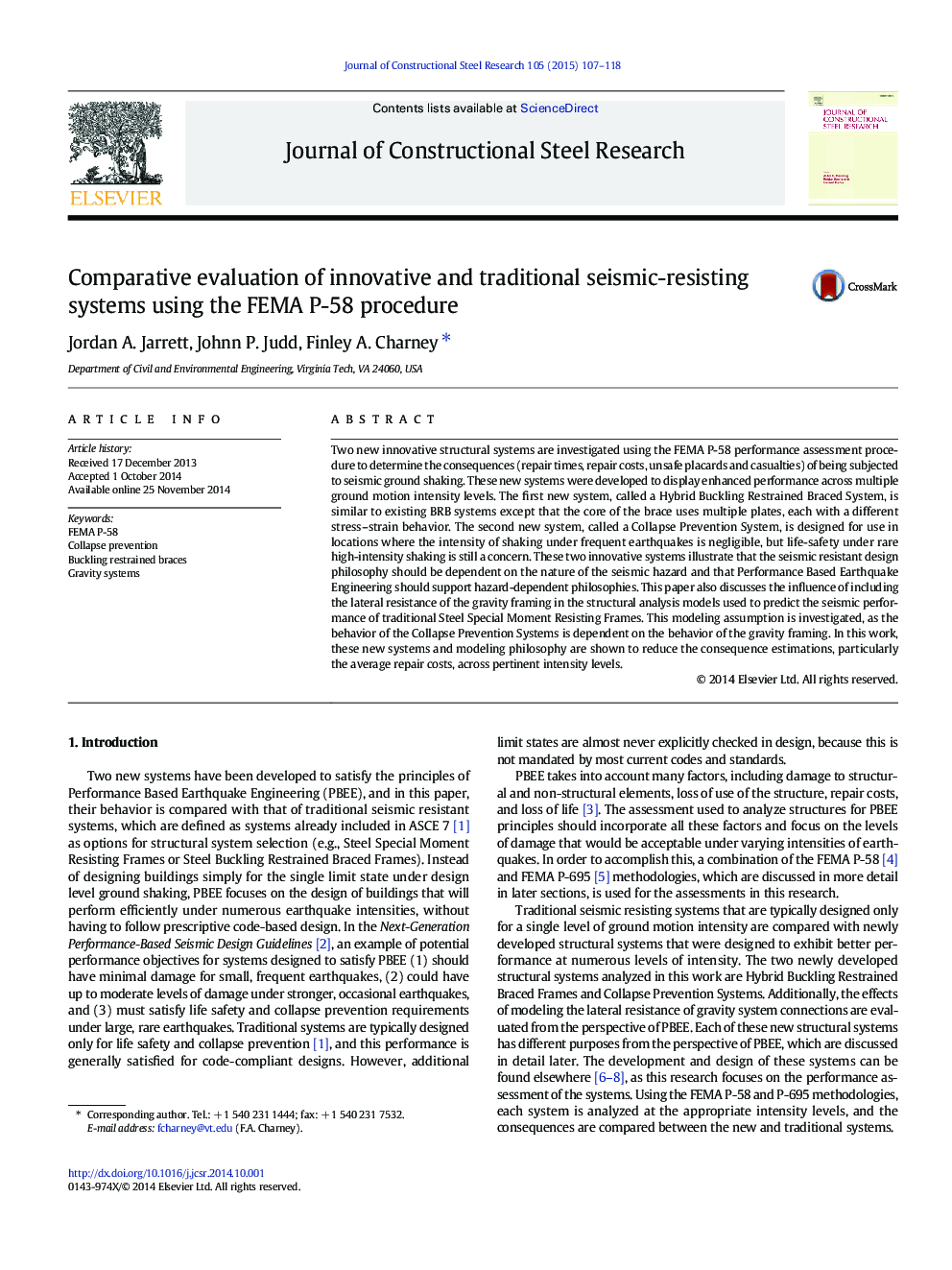| Article ID | Journal | Published Year | Pages | File Type |
|---|---|---|---|---|
| 284627 | Journal of Constructional Steel Research | 2015 | 12 Pages |
•Three inventive seismic resistant systems are compared to traditional counterparts.•The newly designed systems are Hybrid BRBs and Collapse Prevention Systems.•The inclusion of the lateral resistance of the gravity is also investigated.•Comparisons are done using the FEMA P-58 and FEMA P-695 methodologies.•Repair cost results are nearly always reduced by the innovative systems.
Two new innovative structural systems are investigated using the FEMA P-58 performance assessment procedure to determine the consequences (repair times, repair costs, unsafe placards and casualties) of being subjected to seismic ground shaking. These new systems were developed to display enhanced performance across multiple ground motion intensity levels. The first new system, called a Hybrid Buckling Restrained Braced System, is similar to existing BRB systems except that the core of the brace uses multiple plates, each with a different stress–strain behavior. The second new system, called a Collapse Prevention System, is designed for use in locations where the intensity of shaking under frequent earthquakes is negligible, but life-safety under rare high-intensity shaking is still a concern. These two innovative systems illustrate that the seismic resistant design philosophy should be dependent on the nature of the seismic hazard and that Performance Based Earthquake Engineering should support hazard-dependent philosophies. This paper also discusses the influence of including the lateral resistance of the gravity framing in the structural analysis models used to predict the seismic performance of traditional Steel Special Moment Resisting Frames. This modeling assumption is investigated, as the behavior of the Collapse Prevention Systems is dependent on the behavior of the gravity framing. In this work, these new systems and modeling philosophy are shown to reduce the consequence estimations, particularly the average repair costs, across pertinent intensity levels.
